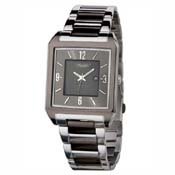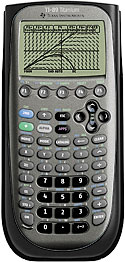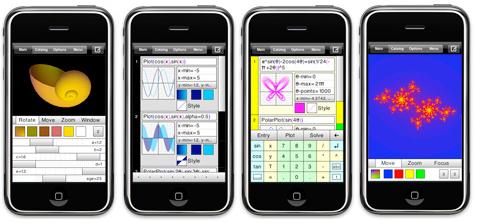Computational media: the universal acid of mathematics teaching (2)
Posted by: Gary Ernest Davis on: December 21, 2009
Coping in a time of rapid change
 At the end of this post I will tell you why I have stopped wearing my watch. It’s a lovely watch, given to me a year ago, on my birthday, by my wife. But I have recently stopped wearing it.
At the end of this post I will tell you why I have stopped wearing my watch. It’s a lovely watch, given to me a year ago, on my birthday, by my wife. But I have recently stopped wearing it.
Several people have contributed comments to  “Computational media: the universal acid of mathematics teaching (1)“. Thank you. Many people tweeted comments – thanks to you all.
A theme running through several comments is that  we should continue to focus on basics of pencil and paper calculation, especially in the early years.  Not uncommonly many people also were opposed to “mindless” pushing of technology buttons.
It’s hard to imagine (am I simply lacking imagination?) that any educator would actually support mindless pushing of technology buttons!  So I wanted to say that  this mindless pushing of buttons issue was a bit of a straw man, except that there is something there to worry about. We DO see kids mindlessly pushing calculator buttons to get a result that they want to proudly present as “the answer”. We do see, if we look hard enough, legions of users of statistical packages simply pushing buttons to carry out a test, for which they cannot properly interpret the result.
Just this week one of my calculus 3 students, unable to calculate a triple integral in spherical coordinates entered the integral into his TI 89, pressed a button, and got “the answer” ! Unsurprisingly, the calculator got the correct answer. Of course if the student had made a slight error in entering the integral, or had pushed the wrong button, he would have likely got a different, wrong “answer”, and would be none the wiser.
But is this all the fault of mindless button pushing. Couldn’t the way we teachers phrase the questions have a lot to do with it? My calculus 3 student was asked to use spherical coordinates. He forgot how. Being an engineering student who wanted a result, he did the next best thing – he used his TI 89 calculator. His method has more to do with a way of being an engineer, than with having knowledge appropriate to an engineer. Professional engineers, in other words, if they ever had to actually calculate a triple integral, would most likely use their calculators or other computational media. This student did what a sensible professional would do. Did he “understand” why the integral came out the way it did. No, but does anyone, even those who calculate on paper?
Hidden agendas
If we teachers ask a student to calculate something, we rarely are interested in the answer, the product. Because we have another goal in our teaching – to understand the utility of spherical coordinates, or to systematically solve linear equations – we are interested in the process of solution – the student’s working.
Many years ago I heard an apocryphal story that went along these lines: on a final philosophy examination at Cambridge, there appeared the question: “Can you explain Wittgenstein’s picture theory of propositions?” A student having no idea answered honestly: No”. The philosophers, realizing the irony of the situation, had to award the student full marks for the answer.
When we ask students to calculate something we usually have a hidden agenda. A well-attuned student knows this and is careful to give us what we want. But even if we ask a student to show their working, they could draw a picture of themselves pressing the calculator button. That is a truthful and full answer to our question, yet it usually will not satisfy is. Why not? Because we have an agenda which we have not fully disclosed to the students.
It seems to me that when we want to prohibit students using calculators because (a) they enjoy it (it’s pretty powerful!) and (b) it gives an answer, we are objecting because we have another agenda. This agenda is part of our educational aim, our background mental model of what education is about. But how can a child or student know that? They cannot, and the best they can do is to look carefully at our facial expressions, responses, or comments on their test papers, and try to guess what what will satisfy us. With the best intentions in the world, we train students to guess our intentions and give us what we want. When they do that we call them good students, good learners, and we think of ourselves as good teachers.
Bringing hidden agendas into the light
So, with that in mind, here is what I am saying about the rapid increase in powerful computational media available to students: computational media is forcing us to re-think what educational agenda we have in teaching mathematics, and why we have that agenda. It is stimulating debate, because it puts incredible power in the hands of students.
This is not a matter of  taste, or ideology, or opinion, whether you think  calculators or computers should or should not be used, in this grade or that. What it is about is the powerful wave of computational media that is compelling us to think about what we teach and why. Why is this inescapable? Because  it results from infrastructural changes in the way of being of young people. An old order is dying and a new one is coming in. We will have to adapt, not as partisans for or against calculators, or any other such computational devices, but as thinking human beings who are witnessing new ways of being.
To witness this change first hand, as it takes place in real time, engage with the debate on the use of cell phones in school. Many are against their use, some are for. My prediction is that within 2 years, it will be laughably old-fashioned not to use cell phones in your mathematics classroom, not to phone  a friend for an answer, but to do mathematics using currently available, cheap, powerful software.  Scary for a teacher who does not know how, exciting for those willing to take a chance.
Now my watch: I have not stopped wearing a watch because I am under 25 , but because I watched Ken Robinson talk about wearing watches [30.00 minutes into the video] and realized how laughably silly it now is.
The world is changing very fast. Our young students are used to technological change. We do not have to adopt the latest gizzmos or whizz-bang apps to do sensible empowering mathematics. But we will have to engage with what we teach and why. The kids’ use of technology will demand it.
Postscript
Imagine writing on paper and having that writing link automatically to deep computation. Futuristic?
Still not convinced the computational world is deeply changing our human experience? Take a look at Pranav Mistry’s TED talk.
4 Responses to "Computational media: the universal acid of mathematics teaching (2)"
Hey, ok, I get it, I guess – but does this really work?
Great idea, but will this work over the long run?
Sometimes it’s really that simple, isn’t it? I feel a little stupid for not thinking of this myself/earlier, though.



December 21, 2009 at 5:34 pm
wow!! great post